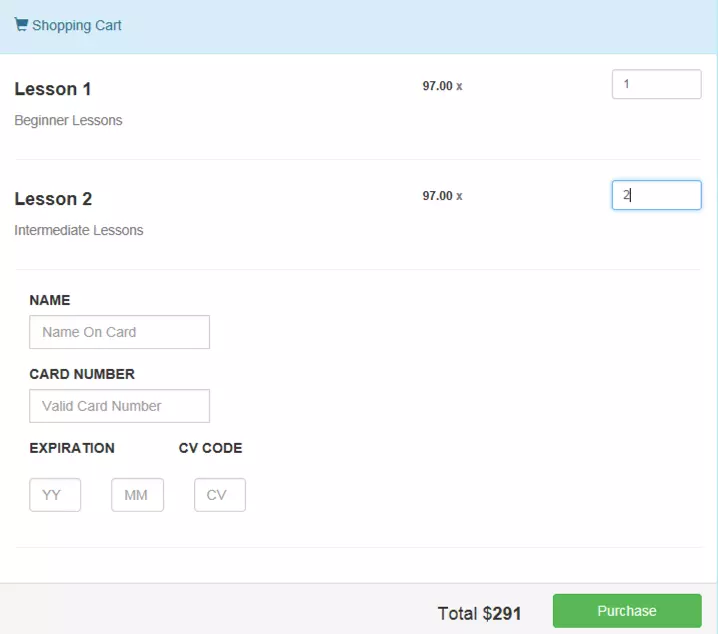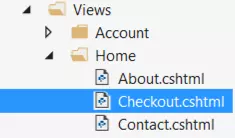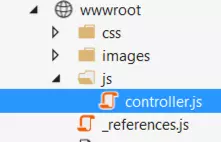 Technology peripherals
Technology peripherals
 It Industry
It Industry
 Visual Studio Community 2015: Adding Ecommerce Functionality
Visual Studio Community 2015: Adding Ecommerce Functionality
Visual Studio Community 2015: Adding Ecommerce Functionality
Feb 20, 2025 am 10:01 AMThis article demonstrates building a simple e-commerce checkout page using Visual Studio Community 2015, Bootstrap, and AngularJS. The process integrates a mock ASP.NET Web API for payment processing, showcasing core e-commerce components.
Key Features:
- Seamless Integration: Visual Studio 2015 facilitates easy integration of e-commerce functionality.
- User-Friendly Interface: Bootstrap and AngularJS create a smooth, responsive checkout experience.
- Mock Payment Processing: A simulated ASP.NET Web API handles JSON payment data, providing feedback on transaction success or failure.
- Real-time Updates: AngularJS enables dynamic price calculations and displays messages based on transaction results.
- Simplified Workflow: The entire checkout process is streamlined within a single form.
This tutorial builds upon previous articles in the series (links provided below) and focuses on adding e-commerce capabilities. A single-page checkout handles the shopping cart, payment information, and displays success/failure messages. Payment details are submitted to a mock ASP.NET Web API acting as a credit card processor, receiving JSON data via POST requests and returning HTTP status codes. AngularJS handles real-time updates, calculating totals and displaying messages.
The checkout page's design leverages Bootstrap for styling. AngularJS manages dynamic display of product totals. The complete process, from product selection to payment, is contained within a single form.
(Image: Screenshot of the completed checkout page) [ ]
]
Implementation Details:
The process involves creating a new MVC view (Checkout.cshtml) and several model classes (Product.cs, Form.cs, Checkout.cs). Bootstrap styling is applied, and AngularJS is used for dynamic functionality. The AngularJS controller (controller.js) initializes variables for product quantities. The server-side code (HomeController.cs) handles form submission, processes data, and interacts with the mock Web API. The Web API (ValueController.cs) simulates payment processing and returns HTTP status codes indicating success or failure.
(Image: Adding a new MVC View Page) [ ]
]
(Image: Adding the controller.js file) [ ]
]
The myForm class in the HomeController binds to form fields, simplifying data access. The ProductManager class calculates total prices. The Checkout class manages success/failure messages and download codes. The Web API uses JsonConvert (Newtonsoft.Json NuGet package) for JSON serialization/deserialization.
(Image: Adding the Newtonsoft.Json NuGet package) [ ]
]
The article concludes with a summary and a preview of the next article, which will focus on creating a mobile notification app using Cordova.
(Links to previous articles in the series):
- Visual Studio Community 2015: Setting Up a Site
- Visual Studio Community 2015: Adding Email and Contact Pages
(This article was sponsored by Microsoft.)
The above is the detailed content of Visual Studio Community 2015: Adding Ecommerce Functionality. For more information, please follow other related articles on the PHP Chinese website!

Hot AI Tools

Undress AI Tool
Undress images for free

Undresser.AI Undress
AI-powered app for creating realistic nude photos

AI Clothes Remover
Online AI tool for removing clothes from photos.

Clothoff.io
AI clothes remover

Video Face Swap
Swap faces in any video effortlessly with our completely free AI face swap tool!

Hot Article

Hot Tools

Notepad++7.3.1
Easy-to-use and free code editor

SublimeText3 Chinese version
Chinese version, very easy to use

Zend Studio 13.0.1
Powerful PHP integrated development environment

Dreamweaver CS6
Visual web development tools

SublimeText3 Mac version
God-level code editing software (SublimeText3)

Hot Topics
 CNCF Triggers a Platform Parity Breakthrough for Arm64 and x86
May 11, 2025 am 08:27 AM
CNCF Triggers a Platform Parity Breakthrough for Arm64 and x86
May 11, 2025 am 08:27 AM
CI/CD puzzles and solutions for open source software in Arm64 architecture Deploying open source software on Arm64 architecture requires a powerful CI/CD environment. However, there is a difference between the support levels of Arm64 and traditional x86 processor architectures, which are often at a disadvantage. Infrastructure components developers for multiple architectures have certain expectations for their work environment: Consistency: The tools and methods used across platforms are consistent, avoiding the need to change the development process due to the adoption of less popular platforms. Performance: The platform and support mechanism have good performance to ensure that deployment scenarios are not affected by insufficient speed when supporting multiple platforms. Test coverage: Efficiency, compliance and
 Benefits of Custom Telecommunication Software
May 11, 2025 am 08:28 AM
Benefits of Custom Telecommunication Software
May 11, 2025 am 08:28 AM
Customized telecom software development is undoubtedly a considerable investment. However, in the long run, you may realize that such a project may be more cost-effective because it can increase your productivity like any ready-made solution on the market. Understand the most important advantages of building a customized telecommunications system. Get the exact features you need There are two potential problems with the off-the-shelf telecom software you can buy. Some lack useful features that can significantly improve your productivity. Sometimes you can enhance them with some external integration, but that isn't always enough to make them great. Other software has too many functions and is too complicated to use. You probably won't use some of these (never!). A large number of features usually adds to the price. Based on your needs
 Why Your Automation Needs AI Decision-Making (And How Wordware Delivers)
May 15, 2025 am 10:47 AM
Why Your Automation Needs AI Decision-Making (And How Wordware Delivers)
May 15, 2025 am 10:47 AM
We have all experienced the magic of traditional automation platforms such as Zapier and IFTTT. They are good at connecting applications and automating simple "if this, then that" sequences: new form submission creates spreadsheet rows, incoming messages trigger Slack alerts. Simple, effective, and a huge time saving for basic tasks. But, how simple is your actual workflow? Once your workflow needs to understand nuanced context, gracefully handle errors, or handle unstructured data, these tools often encounter obstacles. Their simplicity makes it easy to use, but it also becomes a limitation. When simple rules are not enough: consider customer support. Unstructured data poured into ticketing systems—chat clips, screenshots, complex user drawings
 The Ampere Porting Advisor Tutorial
May 24, 2025 am 08:28 AM
The Ampere Porting Advisor Tutorial
May 24, 2025 am 08:28 AM
The?Ampere Porting Advisor?is a fork of the Porting Advisor for Graviton, an open source project from AWS, which, in turn, is a fork of the Arm High Performance Computing group’s Porting advisor. Originally, it was coded as a Python module that
 Best Crypto Payment Gateway for High Risk
Jun 06, 2025 am 08:28 AM
Best Crypto Payment Gateway for High Risk
Jun 06, 2025 am 08:28 AM
Businesses categorized as high risk often face unique challenges when it comes to processing payments as they are typically subjected to stricter scrutiny by financial institutions. A reliable payment gateway is crucial for these merchants as it no





